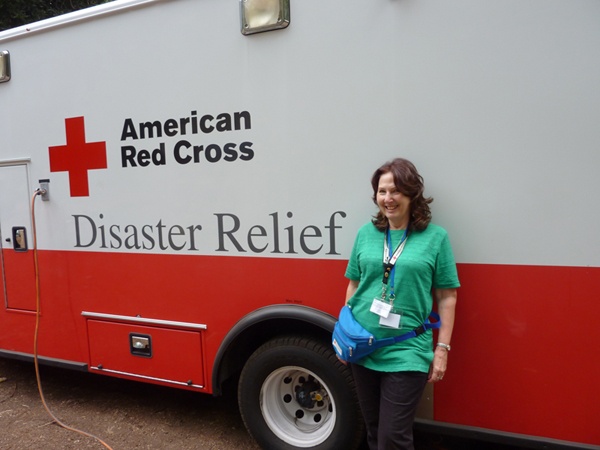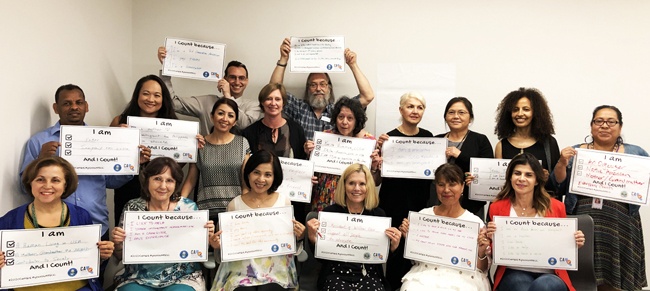BY SEUNG MIN KIM AND STEPHEN GROVES CNN
Updated 6:39 PM PDT, June 18, 2024
Share
WASHINGTON (AP) — President Joe Biden ordered expansive election-year action Tuesday to offer potential citizenship to hundreds of thousands of immigrants without legal status in the U.S., aiming to balance his recent aggressive crackdown on the southern border that enraged advocates and many Democratic lawmakers.
The president announced that his administration will, in the coming months, allow certain U.S. citizens’ spouses without legal status to apply for permanent residency and eventually citizenship without having to first depart the country. The action by Biden, a Democrat, could affect upwards of half a million immigrants, according to senior administration officials.
“The Statue of Liberty is not some relic of American history. It still stands for who we are,” Biden said from a crowded East Room at the White House, filled with advocates, congressional Democrats and immigrants who would be eligible for the program. “But I also refuse to believe that for us to continue to be America that embraces immigration, we have to give up securing our border. They’re false choices.”
Biden’s action, which amounts to the most expansive federal protection for immigrants in over a decade, sets up a significant political contrast with presumptive GOP presidential nominee Donald Trump, whose hardline stance on immigration includes a push for mass deportations and rhetoric casting migrants as dangerous criminals “poisoning the blood” of America.
RELATED COVERAGE
Image
Republicans turn their focus to Harris as talk of replacing Biden on Democratic ticket intensifies
Image
Trump denies knowing about Project 2025, his allies’ sweeping plan to transform the US government
Image
Biden cancels speech at teachers union convention in Philadelphia after union staff goes on strike
On Tuesday, Biden accused “my predecessor” of preying on fears about immigrants as he chastised Trump administration moves, such as a zero-tolerance policy at the southern border that led to the separation of families. But Trump has leaned into his own policies as Biden has faced disapproval of his handling of immigration throughout his presidency. At a rally in Racine, Wisconsin, on Tuesday, Trump proclaimed, “When I’m reelected, Joe Biden’s illegal amnesty plan will be ripped up and thrown out on the very first day that we’re back in office.”
Because the shadow of a second Trump administration looms over Biden’s new policy, Tuesday’s actions will set off a months-long sprint by Latino organizations to get as many people to apply for the program as possible before next January.
To qualify for Biden’s actions, an immigrant must have lived in the United States for 10 years and be married to a U.S. citizen, both as of Monday. If a qualifying immigrant’s application is approved, he or she would have three years to apply for a green card and receive a temporary work permit and be shielded from deportation in the meantime.
About 50,000 noncitizen children with parents who are married to U.S. citizen could also potentially qualify for the process, according to senior administration officials who briefed reporters on the condition of anonymity. There is no requirement on how long the couple must have been married, but no one becomes eligible after Monday. That means immigrants who reach that 10-year mark after Monday will not qualify for the program, according to the officials.
Senior administration officials said they anticipate the process will be open for applications by the end of the summer. Fees to apply have yet to be determined.
Biden formally unveiled his plans at a Tuesday event at the White House, which also marked the 12th anniversary of the Deferred Action for Childhood Arrivals program, a popular Obama-era directive that offered deportation protections and temporary work permits for young immigrants who lack legal status.
The announcement was welcome news to families with mixed immigration status, such as Antonio and Brenda Valle in Los Angeles. They have been married for nearly 12 years and have two sons who are U.S. citizens, but they have lived with the worry every two years that Brenda Valle’s status as a DACA recipient will not be renewed.
“We can start planning more long-term, for the future, instead of what we can do for the next two years,” she said.
Foday Turay was among those invited to the White House Tuesday for the announcement. He came to the U.S. when he was 10 years old from Sierra Leone, and is now a father to a young son and married to a third-generation U.S. citizen. Although he’s enrolled in DACA and working as an assistant district attorney in Philadelphia, his status doesn’t provide relief from the constant worry of deportation.
“My wife is tremendously impacted by this,” Turay said Tuesday before the ceremony. “You know, every day she talks to me about what’s going to happen. What if I get deported? You know, how are we going to raise our son? What country are we going to raise him?”
Republicans were making their own sharp contrasts with Biden’s plan. In a likely preview of GOP campaign ads, Rep. Richard Hudson, chair of House Republicans’ campaign arm, called the Biden policy a “mass amnesty plan.” Other Republicans, such as Texas Gov. Greg Abbott, anticipated that this latest directive would be struck down by the courts.
Sen. Marco Rubio, a Florida Republican who is under consideration to be Trump’s pick for vice president, forcefully advocated for legislation in 2012 that would have offered legal status to young immigrants, but on Tuesday he said “the world is different” now because immigration numbers have risen.
Tuesday’s announcement came two weeks after Biden unveiled a sweeping crackdown at the U.S.-Mexico border that effectively halted asylum claims for those arriving between officially designated ports of entry. Immigrant-rights groups have sued the Biden administration over that directive, which a senior administration official said Monday had led to fewer border encounters between ports.
Biden’s allies believe that the approach he is taking with his twin actions on immigration this month will resonate with voters.
“The only party that is being serious about border security is the Democrats. The only party that’s being thoughtful and compassionate about what to do with people who are living in the shadows are the Democrats,” said Sen. Chris Murphy, a Connecticut Democrat who helped author a bipartisan border bill earlier this year. “The Republican Party has decided to take a walk on border security.”
Among advocates, Gustavo Torres, the executive director of CASA, said Biden’s announcement would energize Latino communities to get out and support him.
“This is what our communities have needed to rally behind President Biden for reelection,” he said.
Biden also announced new regulations that will allow certain DACA beneficiaries and other young immigrants to more easily qualify for long-established work visas. That would allow qualifying immigrants to have protection that is sturdier than the work permits offered by DACA, which is currently facing legal challenges and is no longer taking new applications.
The power that Biden is invoking with his Tuesday announcement for spouses is not a novel one. The policy would expand on authority used by Presidents George W. Bush and Barack Obama to allow “parole in place” for family members of military members, said Andrea Flores, a former policy adviser in the Obama and Biden administrations who is now a vice president at FWD.us, an immigration advocacy organization.
The parole-in-place process allows qualifying immigrants to get on the path to U.S. permanent residency without leaving the country, removing a common barrier for those without legal status but married to Americans. Flores called it “the biggest win for the immigrant rights movement since the announcement of DACA 12 years ago.”
The same progressives who were infuriated with Biden’s asylum order praised the president on Tuesday. Rep. Pramila Jayapal, D-Wash., who leads the Congressional Progressive Caucus, commended Biden and said the actions would help keep American families together.
“Many Americans would be shocked to hear that when a U.S. citizen marries an undocumented person, their spouse is not automatically eligible for citizenship,” she said. ”Imagine loving someone, marrying them, and then still continuing to fear you would be separated from them.”
___
Associated Press writers Christine Fernando in Racine, Wis., Valerie Gonzalez in McAllen, Texas, and Stefanie Dazio in Los Angeles contributed to this report.











